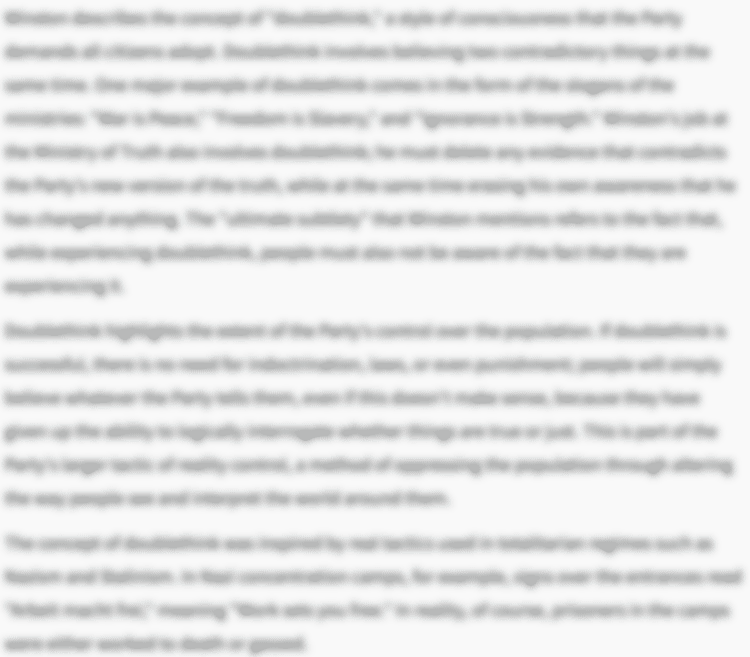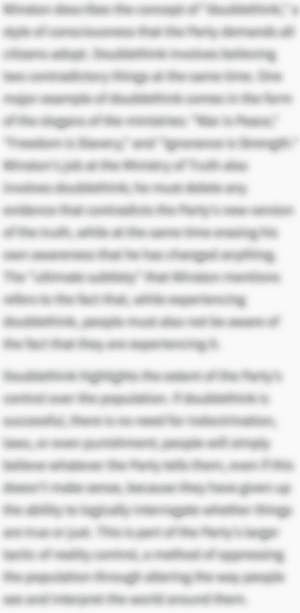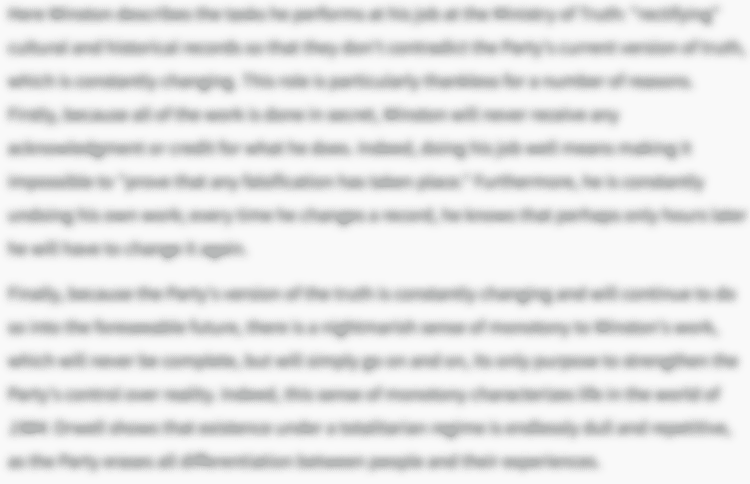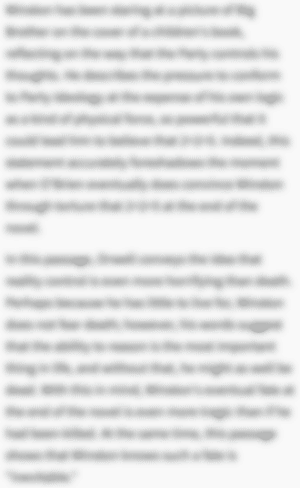One of the main subjects of The Disappearing Spoon is how the elements of the periodic table were discovered. By including a diverse variety of discovery stories, Kean shows that learning about new elements often involves accidental circumstances. This relates to one of the fundamental paradoxes of scientific discovery: at its core, discovery is the process of finding something that already exists before definitively knowing that it exists. The fact that such discoveries must involve both knowledge and lack of knowledge makes it unsurprising that accidents are so often necessary to the process. At the same time, Kean also highlights an important distinction between the importance of accidents and the rigor with which experiments must be performed in order to prove that an element exists. Accidents might give an initial hint of a new discovery, but it is only after performing an experiment many times, according to exact specifications, that this discovery can be proven to be true.
One of the most extraordinary aspects of the book lies in Kean’s depiction of how completely random accidents can lead to scientific invention and discovery. For example, he explains how the German chemist Robert Bunsen’s experiments with arsenic led him to experience damaging side effects that included hallucinations. This, in turn, encouraged Bunsen to develop an antidote to arsenic poisoning. When Bunsen’s work with arsenic eventually caused an explosion that left him half-blind, this didn’t turn him off experimenting—it actually encouraged him to “indulg[e] his passion for natural explosions,” pursuing further research in this area. His research helped him develop the famous scientific tool named after him: the Bunsen burner. Another example of accidents (and even failures) leading to discovery is when the early German alchemist Friedrich Böttinger was captured by King Augustus of Poland because he’d heard Böttinger was impressing crowds by making two silver coins “disappear.” Although Böttinger wasn’t able to repeat his trick for the king, his imprisonment put him into contact with Ehrenfried Walter von Tschirnhaus, who had been trying to find a way to make porcelain. Working together, the two men were finally able to devise a successful method where others had failed for centuries.
Yet while Kean provides a host of examples of accidents leading to discovery, he also shows that not all accidents ultimately lead to the increase of (accurate) scientific knowledge. In Chapter 8, for example, Kean explores the story of Linus Pauling and Emilio Segrè, who, despite being great scientists, “will forever be united in infamy for making two of the biggest mistakes in science history.” Before narrating the details of Paulding and Segrè’s mistakes, Kean emphasizes that “mistakes in science don’t always lead to baleful results,” providing a host of examples of times when mistakes led to important discoveries. However, in Pauling and Segrè’s case, there wasn’t a fortunate outcome to their errors: Segrè overlooked the fact that his research produced both nuclear fission and the elusive element 43 of the periodic table, while Pauling combined mistaken intuitions with “bad data” to draw incorrect conclusions about DNA.
While overall Kean shows that accidents (and even mistakes) are vital to discovery, he does emphasize that no discovery is proven true until it is subject to rigorous scrutiny through repeated experimentation. Unless a scientist goes through this process, their discovery will not be considered valid—and will be vulnerable to being proven wrong like in the cases of Segrè and Pauling. Indeed, Kean spends the penultimate chapter of the book discussing the extraordinary lengths to which scientists go in order to achieve absolute precision in their experiments. He explains that the scientists most devoted to precision are those who work in national standards bureaus, and that to these scientists, “measurement isn’t just a practice that makes science possible; it’s science itself.” Clearly, there isn’t any room for accidents or mistakes in this realm of science—the whole function of standards bureaus is to eliminate error to the greatest degree possible. Yet as the book shows, this dedication to precision doesn’t actually contradict the importance of accident within the scientific process. Precision makes experiments repeatable, and the accurate repetition of experiments is the only way in which discoveries—which often occur as the result of accidents—are confirmed to be true. In this sense, accidents and precise experimentation are linked as two vital parts of scientific discovery.
Experimentation, Accidents, and Discovery ThemeTracker

Experimentation, Accidents, and Discovery Quotes in The Disappearing Spoon
I latched on to those tales, and recently, while reminiscing about mercury over breakfast, I realized that there’s a funny, or odd, or chilling tale attached to every element on the periodic table. At the same time, the table is one of the great intellectual achievements of humankind. It’s both a scientific accomplishment and a storybook, and I wrote this book to peel back all of its layers one by one, like the transparencies in an anatomy textbook that tell the same story at different depths.

Unlock explanations and citation info for this and every other The Disappearing Spoon quote.
Plus so much more...
Get LitCharts A+The discovery of eka-aluminium, now known as gallium, raises the question of what really drives science forward—theories, which frame how people view the world, or experiments, the simplest of which can destroy elegant theories.
But notice the dates here. Just as the basic understanding of electrons, protons, and neutrons fell into place, the old-world political order was disintegrating. By the time Alvarez read about uranium fission in his barber’s smock, Europe was doomed.
Now, mistakes in science don’t always lead to baleful results. Vulcanized rubber, Teflon, and penicillin were all mistakes. Camillo Golgi discovered osmium staining, a technique for making the details of neurons visible, after spilling that element onto brain tissue. Even an outright falsehood—the claim of the sixteenth-century scholar and protochemist Paracelsus that mercury, salt, and sulfur were the fundamental atoms of the universe—helped turn alchemists away from the mind-warping quest for gold and usher in real chemical analysis. Serendipitous clumsiness and outright blunders have pushed science ahead all through history.
Pauling’s and Segrè’s were not those kind of mistakes.
Obscure elements do obscure things inside the body—often bad, but sometimes good. An element toxic in one circumstance can become a lifesaving drug in another, and elements that get metabolized in unexpected ways can provide new diagnostic tools in doctor’s clinics.
Unlike Crookes, or the megalodon hunters, or Pons and Fleischmann, Röntgen labored heroically to fit his findings in with known physics. He didn’t want to be revolutionary.
The story starts in the early 1920s when Satyendra Nath Bose, a chubby, bespectacled Indian physicist, made an error while working through some quantum mechanics equations during a lecture […] Unaware of his mistake at first, he’d worked everything out, only to find that the “wrong” answers produced by his mistake agreed very well with experiments on the properties of photons—much better than the “correct” theory.
So as physicists have done throughout history, Bose decided to pretend that his error was the truth, admit that he didn’t know why, and write a paper. His seeming mistake, plus his obscurity as an Indian, led every established scientific journal in Europe to reject it. Undaunted, Bose sent his paper directly to Albert Einstein. Einstein studied it closely and determined that Bose’s answer was clever—it basically said that certain particles, like photons, could collapse on top of each other until they were indistinguishable. Einstein cleaned the paper up a little, translated it into German, and then expanded Bose’s work into another, separate paper that covered not just photons but whole atoms. Using his celebrity pull, Einstein had both papers published jointly.
Not every breakthrough in periodic-table science has to delve into exotic and intricate states of matter like the BEC. Everyday liquids, solids, and gases still yield secrets now and then, if fortune and the scientific muses collude in the right way. According to legend, as a matter of fact, one of the most important pieces of scientific equipment in history was invented not only over a glass of beer but by a glass of beer.
To scientists who work at standards bureaus, measurement isn’t just a practice that makes science possible; it’s a science in itself. Progress in any number of field, from post-Einsteinian cosmology to the astrobiological hunt for life on other plants, depends on our ability to make ever finer measurements based on ever smaller scraps of information.











